Marine Corps recruits participate in a simulated battle during basic warrior training at Marine Corps Recruit Depot Parris Island, S.C. Feb. 16, 2021.
Providing up-to-date information, news and original content on American Military issues.
Marine Corps recruits participate in a simulated battle during basic warrior training at Marine Corps Recruit Depot Parris Island, S.C. Feb. 16, 2021.
Northcom is coordinating the operation to get "shots in arms" and the Los Angeles effort is doing just that. Active duty teams are at California State University, Los Angeles to help vaccinate 6,000 people per day. The troops are there in support of the Federal Emergency Management Agency and work as part of the whole-of-government approach.
Austin has called the COVID-19 pandemic the most pressing problem in the world today. He must ensure the health and readiness of the force while dedicating resources and capabilities to federal, state and local officials. Northcom officials told the secretary that they have not had to refuse a request for assistance from FEMA yet.
The DOD now has more than 1,900 personnel involved in the vaccine support mission. There are three Type 1 teams of approximately 222 service members deployed. There are eight Type 2 teams of about 139 personnel and about five smaller teams deployed. There are about 2,000 more military personnel awaiting requests for support from FEMA.
The Type 1 team can inoculate 6,000 people per day. Type 2 teams can inoculate about half of that number and the other teams about 250 vaccinations per day. There are teams vaccinating people in California, New York, Texas, New Jersey and the U.S. Virgin Islands.
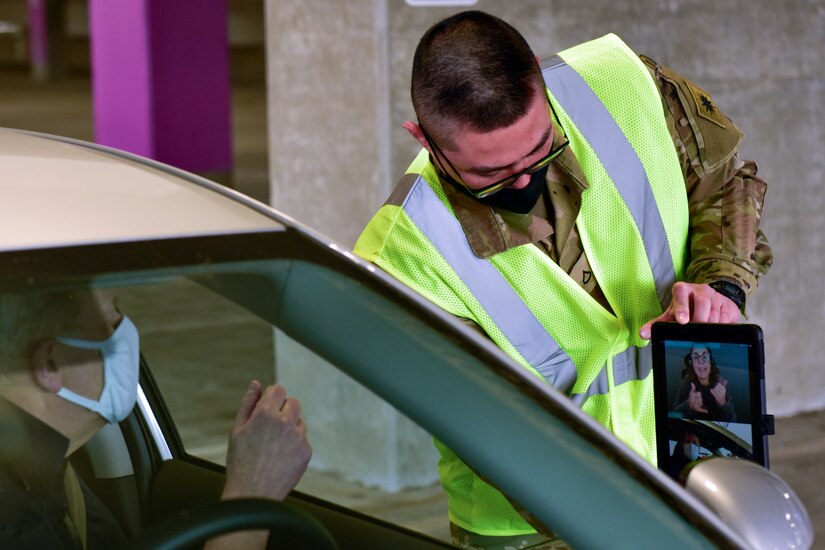
Teams with about 780 personnel will deploy to Florida and Pennsylvania, U.S. Northern Command officials said. A Type 1 team from the Marine Corps will move to Philadelphia — the city where the Corps formed in 1775. The team will set up in the Pennsylvania Convention Center.
Florida will receive four Type 2 teams with Army teams deploying to Orlando and Miami; a Navy team to Jacksonville and an Air Force team to Tampa.
All of this is on top of the assistance the military has provided to civilian agencies since the pandemic began a year ago. The U.S. military helped get Americans home from overseas locations early on and assisted in quarantining civilians from affected cruise ships. Two Navy hospital ships deployed to New York and California when COVID-19 cases threatened to run out of control. Army teams deployed to other affected communities.
Later on in the pandemic, teams from all services gave first responders a hand when needed most and went to hospitals where local health care workers were being overwhelmed.
Military researchers worked to develop treatments for the symptoms of COVID-19 and also worked with civilian agencies and companies on developing vaccines.
Military expertise — especially logistical expertise — was called on once vaccines were granted emergency use authorizations by the Food and Drug Administration. Millions and millions of doses of the vaccines have been distributed to the states, the District of Columbia and territories.
Now military personnel are going the final mile — getting vaccines into arms. The Los Angeles effort is averaging between 5,800 and 6,000 vaccinations per day, said military officials speaking on background. Officials said the dips in vaccinations can be traced back to the interruptions in supply caused by the extreme weather in many parts of the country.
Feb. 24, 2021 | BY Terri Moon Cronk , DOD News
"Everything we do is about generating peace. We compete to win, … and if deterrence fails, we're prepared to respond to aggression, primarily through NATO," Wolters, also NATO's Supreme Allied Commander Europe, said. He spoke virtually at the Air Force Association's Aerospace Warfare Symposium.
Securing America requires a global effort, the general emphasized. As threats to our respective nations have evolved over seven decades of NATO's existence, the alliance has adapted to provide for the collective security of its members, he said.

"Our air forces in Europe play a critical role — as do all of our components in all domains — in demonstrating our collective resolve and readiness to deter our adversaries and sustain peace," Wolters said. "Beyond exercises, we conduct operations and other activities to compete, deter and prepare to respond to aggression, including presence in the Black Sea region."
Further to the north, Air Force bombers are strengthening the enduring partnership between the U.S. and Norway. The missions demonstrate U.S. commitment to its allies and partners and the credibility of the air forces to address a more uncertain global security environment, he said. Across Europe, the United States is in the 16th year of NATO air-policing missions; and 60 years of allies working collectively under NATO to safeguard and protect the integrity of the skies.
"We live in an increasingly complex and contested world," Wolters said. "Political uncertainty, energy competition and diffusion of disruptive technology are stressing the established rules-based international order, [and] threats and challenges seek to take advantage of these conditions through aggressive action, using all instruments of national power [that] are backed by increasingly capable military forces."
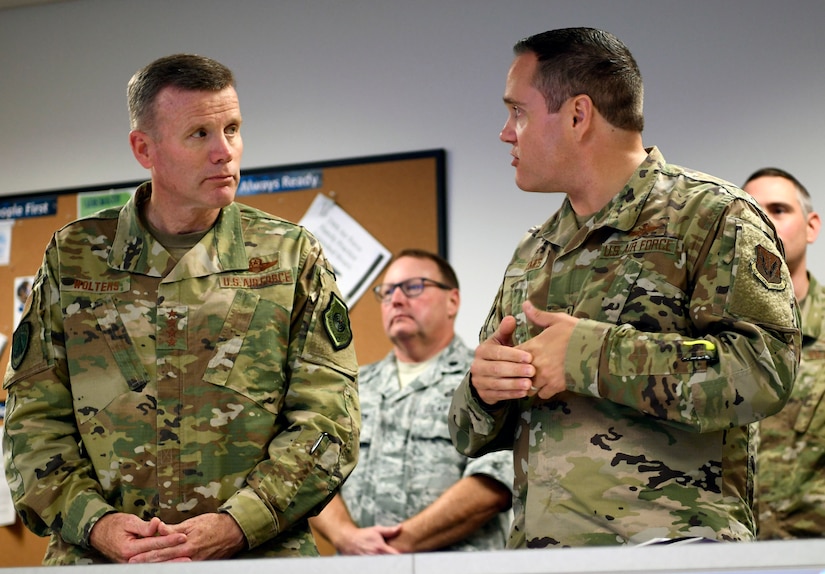
Adversaries amplify these malign activities and foment instability with disinformation and destructive cyber campaigns, testing national governments and multinational institutions, he said.
If left unchecked, such activities could escalate into more aggressive behavior, the Eucom commander said. Meeting these threats and challenges requires the United States to take meaningful steps away from a binary model of peace or war, and toward a gradient that includes competition with a military dimension below armed conflict.
"We're in an era of global-power competition. Winning in this era is ensuring that global power competition does not become a global power war," he emphasized. "Despite widespread international condemnation and continued economic sanctions, Russia engages in destabilizing and malign activities across the globe, with many of those activities happening close to home [in Europe]."
Russia, Wolters added, seeks to maintain a sphere of influence from the Soviet era by retaining or employing forces to coerce neighboring Soviet-sovereign nations. In this global power competition, Russia is employing unconventional tools such as private military companies to intimidate, weaken and divide U.S. allies and partners.
"Russia remains an enduring existential threat to the United States and our European allies," he said.
And China's growing European influence centers around an aggressive economic and diplomatic campaign, the general said. Seventeen Central and Eastern European nations participate in a cooperative framework program led by China, while some European countries have bilateral agreements to build infrastructures and give China an advantage in global trade and market access, he added.
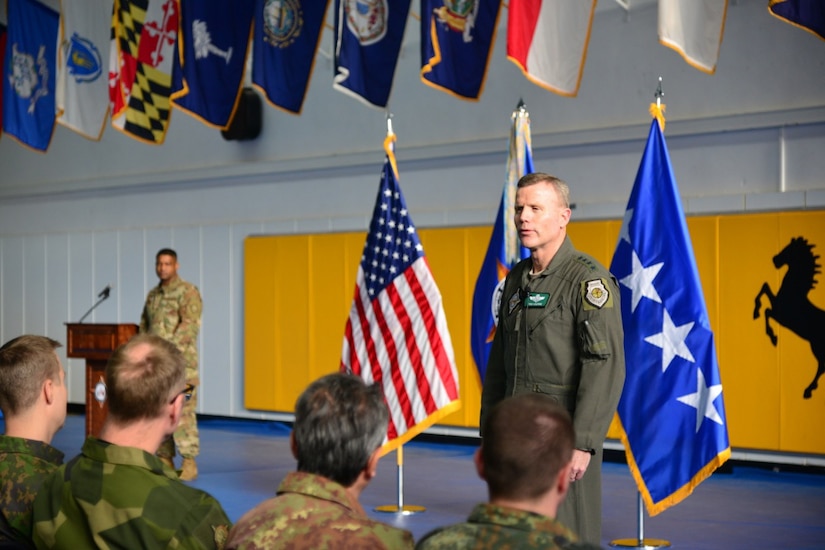
Facilitating sustainable economic development, fostering cooperation and ensuring a stable, conflict-free Arctic region enhances interoperability and proficiency, while it also shows a collective resolve to uphold the rules-based order, Wolters said.
"However, Russia and the Arctic nation and China — having declared itself a near-Arctic power — continued to militarize the region and seek to establish economic footholds to gain influence over regional governance," he pointed out. "The activities by Russia and China illustrate the importance for Eucom to come together with our allies and partners to maintain a credible Arctic deterrence and ensure vital sea lines of communication remain open by securing the Greenland, Iceland and United Kingdom gap."
As competition extends beyond the confines of Earth, the United States must also focus on what is happening in space, the Eucom commander noted. "Our military advantage depends on space, and our adversaries have taken note. Space capabilities we develop have had an enormous benefit for every American and are vital to our nation's security," he said.
"Our security posture is strong," Wolters said. "We possess combat-critical capability across all domains — land, sea, air, space and cyber. We will maintain and work to hone this capability to deter our adversaries and defensive partners and our interests," he said.
Army Pfc. Dakota Spautz takes cover behind a tree during a combined training exercise with Lithuanian troops at the Kairai Training Area, Lithuania, Feb. 21, 2021.
Navy Seaman Katherine Royal uses a laser rangefinder to measure the distance between the fleet replenishment oiler USNS John Ericsson and the aircraft carrier USS Theodore Roosevelt during a replenishment in the Pacific Ocean, Feb. 23, 2021.
A fuel truck and snow machines prepare for Exercise Arctic Warrior 21 at Donnelly Drop Zone, Alaska, Feb. 8, 2021. The cold-weather training event incorporates airborne operations, situational training and live-fire exercises.
Feb. 24, 2021 | BY C. Todd Lopez , DOD News
Senior Enlisted Advisor to the Chairman Ramón "CZ" Colón-López said his leadership philosophy has remained largely unchanged from his time in the Air Force: "collaboration without encroachment."
"I see myself as a sensor, a synchronizer and an integrator for the total force," said Colón-López, during an online discussion today that was part of the Air Force Association's 2021 Virtual Aerospace Warfare Symposium. "A lot of that comes with understanding the issues that are exclusive to the services."
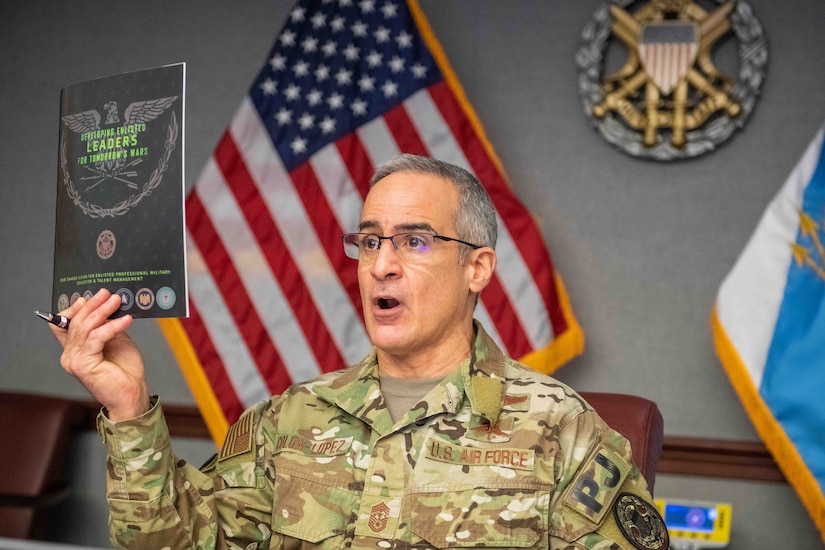
The SEAC said he always works in partnership with senior enlisted advisors from the military services to solve problems in a joint way.
"The one thing that we're in the habit of doing is always getting around a table to discuss the issues, find the connective tissue between those particular items and then come up with the best solutions," he said.
For most of the last 20 years, the U.S. military has been fighting a counter-insurgency and counter-terrorist war, Colón-López said. That fight has been successful because it was a joint fight from the start.
"It has taken a joint effort, a multinational effort, to get after the mission at hand," he said. "That is the model that we're going to follow from now on. So the joint perspective is critical to the success of future missions."
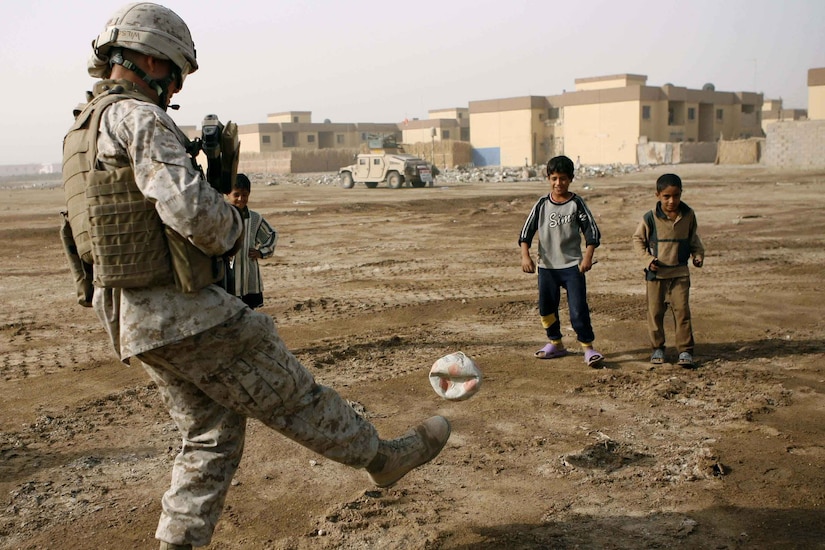
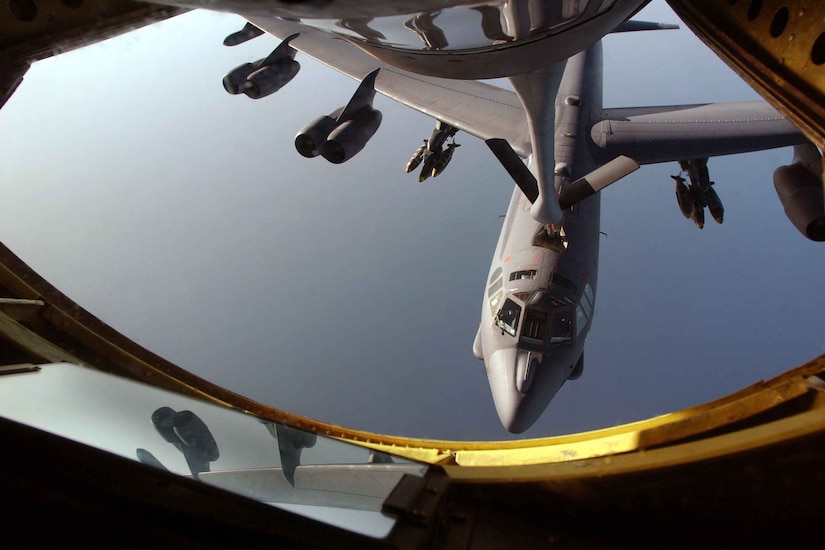
A new document, titled "Developing Enlisted Leaders for Tomorrow's Wars," is scheduled to be released by the Joint Staff this week, Colón-López said. That document will spell out expectations for enlisted leaders in the joint force.
"The intent and the purpose of this particular document is to provide you a foundation of expectations from every member fighting a joint war," Colón-López said.
He said the professional military education vision document was written in collaboration with all the service senior enlisted advisors, the National Guard Bureau and the Coast Guard.
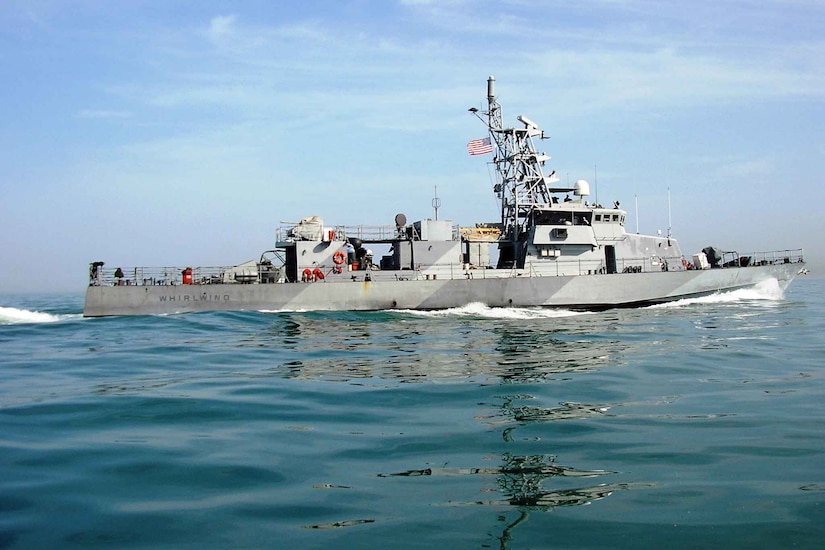
"The reason we did that is because the multiple approaches to leadership that we have, based on the different cultures of the services, is what matters the most for a joint warfighter," he said. "Once we build the right airman, soldier, guardian, sailor, Marine and Coast Guardsmen, to be able to go ahead and fight in the joint arena, there are three things that we require, and that is character, competence and commitment. And from that, we start growing you into a more rounded entity to be able to go ahead and execute the mission, anytime, at any place."
Colón-López also said that the No. 1 solution to sexual assault, harassment, suicides and other issues in the services won't come from the Pentagon, it'll come from enlisted leaders.
"It's no secret that we have been living in some pretty tough times here lately ... we're dealing with sexual assault, harassment, suicide, many other issues — diversity and inclusion — that are plaguing and eroding the cohesion of military services," he said.
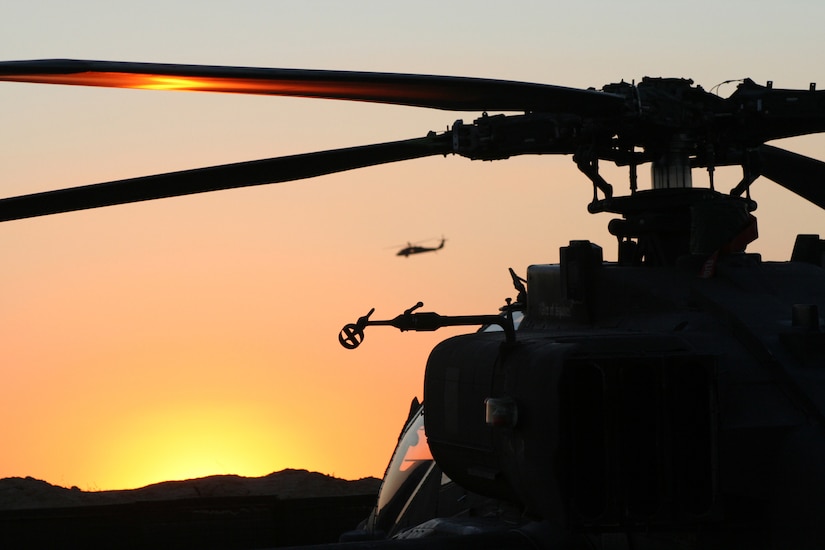
Fixing those problems must start at the lowest level — where those problems occur — not at the highest levels, where policy is made, Colón-López said.
"You deserve what you tolerate," Colón-López said. "If you see a problem, don't walk past it — take action. If you have a fix, voice it. And if you need to stand up for somebody, stand tall and make sure that your voice and your actions carry the mail to the people that need to correct that. This is all about personal involvement and accountability — and we can do that at the lowest levels. Do not wait for the institution to spoon feed you the solutions that are intrinsic to mission command."
Marine Corps Lance Cpl. Marilyn Hanley conducts radio checks with various aircraft during realistic urban training at Marine Corps Air Station Yuma, Ariz., Feb. 17, 2021.
Feb. 24, 2021
Secretary of Defense Lloyd J. Austin III announced today that the president has made the following nominations:
Brig. Gen. John J. Allen has been appointed to the grade of major general. Allen is currently serving as the commander, Air Force Civil Engineer Center, Air Force Installation and Mission Support Center, Air Force Materiel Command, Joint Base San Antonio-Lackland, Texas.
Brig. Gen. Jason R. Armagost has been appointed to the grade of major general. Armagost is currently serving as the director of operations and communications, Headquarters Air Force Global Strike Command, Barksdale Air Force Base, Louisiana.
Brig. Gen. Sharon R. Bannister has been appointed to the grade of major general. Bannister is currently serving as the command surgeon, Headquarters Air Combat Command, Joint Base Langley-Eustis, Virginia.
Brig. Gen. Matthew W. Davidson has been appointed to the grade of major general. Davidson is currently serving as the deputy commander, Special Operations Joint Task Force – Afghanistan, U.S. Central Command, Bagram Air Base, Afghanistan.
Brig. Gen. Evan C. Dertien has been appointed to the grade of major general. Dertien is currently serving as the director, air, space and cyberspace operations, Headquarters Air Force Materiel Command, Wright-Patterson Air Force Base, Ohio.
Brig. Gen. Michael L. Downs has been appointed to the grade of major general. Downs is currently serving as the vice director for intelligence, J-2, Joint Staff, Pentagon, Washington, D.C.
Brig. Gen. Troy E. Dunn has been appointed to the grade of major general. Dunn is currently serving as the director, military force management policy, Deputy Chief of Staff for Manpower, Personnel and Services, Headquarters U.S. Air Force, Pentagon, Washington, D.C.
Brig. Gen. Peter M. Fesler has been appointed to the grade of major general. Fesler is currently serving as the deputy director of operations, Headquarters North American Aerospace Defense Command, Peterson Air Force Base, Colorado.
Brig. Gen. Paul A. Friedrichs has been appointed to the grade of major general. Friedrichs is currently serving as the Joint Staff surgeon general, Joint Staff, Pentagon, Washington, D.C.
Brig. Gen. David M. Gaedecke has been appointed to the grade of major general. Gaedecke is currently serving as the vice commander, Sixteenth Air Force (Air Forces Cyber), Air Combat Command, Joint Base San Antonio-Lackland, Texas.
Brig. Gen. Anthony W. Genatempo has been appointed to the grade of major general. Genatempo is currently serving as the commander, Air Force Nuclear Weapons Center; and Air Force program executive officer for strategic systems, Air Force Materiel Command, Kirtland Air Force Base, New Mexico.
Brig. Gen. David A. Harris Jr. has been appointed to the grade of major general. Harris is currently serving as the director, Air Force Warfighting Integration Capability, Deputy Chief of Staff for Strategy, Integration and Requirements, Headquarters U.S. Air Force, Pentagon, Washington, D.C.
Brig. Gen. Thomas K. Hensley has been appointed to the grade of major general. Hensley is currently serving as the director, intelligence, Headquarters U.S. European Command, Stuttgart, Germany.
Brig. Gen. Robert S. Jobe has been appointed to the grade of major general. Jobe is currently serving as the director, strategic plans, Deputy Chief of Staff for Plans and Programs, Headquarters U.S. Air Force, Pentagon, Washington, D.C.
Brig. Gen. Jeffrey R. King has been appointed to the grade of major general. King is currently serving as the commander, Oklahoma City Air Logistics Complex, Tinker Air Force Base, Oklahoma.
Brig. Gen. Leonard J. Kosinski has been appointed to the grade of major general. Kosinski is currently serving as the deputy commander, Fifth Air Force; and director, Joint Air Component Coordination Element-Japan, Yokota Air Base, Japan.
Brig. Gen. Thomas E. Kunkel has been appointed to the grade of major general. Kunkel is currently serving as the deputy director, Operations, Operations Team Five, National Joint Operations and Intelligence Center, J-3, Joint Staff, Pentagon, Washington, District of Columbia.
Brig. Gen. Laura L. Lenderman has been appointed to the grade of major general. Lenderman is currently serving as the director, Plans, Programs, and Requirements, Headquarters Air Education and Training Command, Joint Base San Antonio-Randolph, Texas.
Brig. Gen. Brook J. Leonard has been appointed to the grade of major general. Leonard is currently serving as the chief of staff, U.S. Space Command, Peterson Air Force Base, Colorado.
Brig. Gen. David B. Lyons has been appointed to the grade of major general. Lyons is currently serving as the senior military assistant to the deputy secretary of defense, Office of the Secretary of Defense, Pentagon, Washington, D.C.
Brig. Gen. Michael E. Martin has been appointed to the grade of major general. Martin is currently serving as the director of operations, Headquarters Air Force Special Operations Command, Hurlburt Field, Florida.
Brig. Gen. Albert G. Miller has been appointed to the grade of major general. Miller is currently serving as the chief of staff, Headquarters Air Mobility Command, Scott Air Force Base, Illinois.
Brig. Gen. Heather L. Pringle has been appointed to the grade of major general. Pringle is currently serving as the commander, Air Force Research Laboratory, Air Force Materiel Command, Wright-Patterson Air Force Base, Ohio.
Brig. Gen. Clark J. Quinn has been appointed to the grade of major general. Quinn is currently serving as the deputy director, plans and policy, J-5, Headquarters U.S. Central Command, MacDill Air Force Base, Florida.
Brig. Gen. Adrian L. Spain has been appointed to the grade of major general. Spain is currently serving as the director, plans, programs and analyses, Headquarters U.S. Air Forces in Europe and U.S. Air Forces Africa, Ramstein Air Base, Germany.
Brig. Gen. Daniel H. Tulley has been appointed to the grade of major general. Tulley is currently serving as the commander, 379th Air Expeditionary Wing, Air Combat Command, Al Udeid Air Base, Qatar.
A Marine Corps CH-53 Super Stallion hovers at landing zone Swan during Hagatna Fury in Okinawa, Japan, Feb. 18, 2021. The exercise allows Marines to hone abilities to seize, defend and provide expeditionary sustainment for key maritime terrain.
U.S. Air Force Academy cadet Thomas Daskas plays in a hockey game against Canisius College at the academy in Colorado Springs, Colo., Feb. 20, 2021.
Marine Corps recruits George W. Rieger, left, and Phrtsamone A. Manichanh participate in a confidence course at Marine Corps Recruit Depot San Diego, Feb. 23, 2021.
Sailors man the rails aboard the USS Mitscher as the ship departs Naval Station Norfolk, Va., Feb. 17, 2021, to conduct maritime operations to maintain regional security and stability.
Feb. 24, 2021
Secretary of Defense Lloyd J. Austin III announced today that the president has made the following nominations:
Rear Adm. (lower half) James A. Aiken for appointment to the rank of rear admiral. Aiken is currently serving as commander, Carrier Strike Group Three, Bremerton, Washington.
Rear Adm. (lower half) Michael E. Boyle for appointment to the rank of rear admiral. Boyle is currently serving as director, maritime operations, U.S. Pacific Fleet, Pearl Harbor, Hawaii.
Rear Adm. (lower half) Keith B. Davids for appointment to the rank of rear admiral. Davids is currently serving as commander, Special Operations Command South, U.S. Southern Command, Homestead Air Reserve Base, Florida.
Rear Adm. (lower half) Leonard C. Dollaga for appointment to the rank of rear admiral. Dollaga is currently serving as commander, Submarine Group Seven; commander, Task Force Seven Four; and commander, Task Force Five Four, Yokosuka, Japan.
Rear Adm. (lower half) Christopher S. Gray for appointment to the
rank of rear admiral. Gray is currently serving as commander, Region
Europe, Africa, Central; and commander, Maritime Air Forces, Naples,
Italy.
Rear Adm. (lower half) John E. Gumbleton for appointment to the rank of
rear admiral. Gumbleton is currently serving as deputy assistant
secretary of the Navy for budget; and director, Fiscal Management
Division, N82, Office of the Chief of Naval Operations, Washington, D.C.
Rear Adm. (lower half) Sara A. Joyner for appointment to the rank of
rear admiral. Joyner is currently serving as chief of legislative
affairs, Washington, D.C.
Rear Adm. (lower half) James A. Kirk for appointment to the rank of rear
admiral. Kirk is currently serving as commander, Carrier Strike Group
Eleven, Everett, Washington.
Rear Adm. (lower half) Andrew J. Loiselle for appointment to the rank of
rear admiral. Loiselle is currently serving as commander, Carrier
Strike Group Four, Norfolk, Virginia.
Rear Adm. (lower half) Brendan R. McLane for appointment to the rank of
rear admiral. McLane is currently serving as special assistant to
commander, U.S. Fleet Forces Command, Norfolk, Virginia.
Rear Adm. (lower half) Peter G. Vasely for appointment to the rank of rear admiral. Vasely is currently serving as director for operations, Defense Intelligence Agency, Washington, D.C.
Rear Adm. (lower half) James P. Waters III for appointment to the rank of rear admiral. Waters is currently serving as commander, Submarine Group Two, Norfolk, Virginia.
Rear Adm. (lower half) George M. Wikoff for appointment to the rank of rear admiral. Wikoff is currently serving as special assistant to the deputy chief of naval operations for operations, plans and strategy, N3/N5, Office of the Chief of Naval Operations, Washington, D.C.
Capt. Christopher D. Alexander for appointment to the rank of rear admiral (lower half). Alexander is currently serving as commanding officer, Surface Warfare Officer School Command, Newport, Rhode Island.
Capt. Sean R. Bailey for appointment to the rank of rear admiral (lower half). Bailey is currently serving as chief of staff, Naval Air Force Atlantic, Norfolk, Virginia.
Capt. Thomas R. Buchanan for appointment to the rank of rear admiral (lower half). Buchanan is currently serving as commandant of midshipman, U.S. Naval Academy, Annapolis, Maryland.
Capt. Christopher J. Cavanaugh for appointment to the rank of rear
admiral (lower half). Cavanaugh is currently serving as director,
submarine/nuclear officer distribution (PERS 42), Personnel Command,
Millington, Tennessee.
Capt. Brad J. Collins for appointment to the rank of rear admiral (lower
half). Collins is currently serving as chief of staff, Installation
Command, Washington, D.C.
Capt. Jennifer S. Couture for appointment to the rank of rear admiral
(lower half). Couture is currently serving as assistant chief of staff,
Naval Surface Force, Atlantic, Norfolk, Virginia.
Capt. William R. Daly for appointment to the rank of rear admiral (lower half). Daly is currently serving as chief of staff, Naval Surface Forces/Naval Surface Force, U.S. Pacific Fleet, San Diego, California.
Capt. Erik J. Eslich for appointment to the rank of rear admiral
(lower half). Eslich is currently serving as executive assistant, U.S.
Fleet Forces Command, Norfolk, Virginia.
Capt. Ronald A. Foy for appointment to the rank of rear admiral (lower
half). Foy is currently serving as deputy commander, Naval Special
Warfare Group, Dam Neck, Virginia.
Capt. Patrick J. Hannifin for appointment to the rank of rear admiral (lower half). Hannifin is currently serving as director, aircraft carrier requirements, N98, Office of the Chief of Naval Operations, Washington, D.C.
Capt. Christopher A. Kijek for appointment to the rank of rear admiral (lower half). Kijek is currently serving as executive assistant, U.S. Indo-Pacific Command, Camp H. M. Smith, Hawaii.
Capt. Oliver T. Lewis for appointment to the rank of rear admiral (lower half). Lewis is currently serving as executive assistant to the chief of naval operations, Office of the Chief of Naval Operations, Washington, D.C.
Capt. Stephen G. Mack for appointment to the rank of rear admiral (lower half). Mack is currently serving as chief of staff, Submarine Force, U.S. Atlantic Fleet; and chief of staff, U.S. Strategic Command Special Activities Atlantic, Norfolk, Virginia.
Capt. Benjamin R. Nicholson for appointment to the rank of rear admiral (lower half). Nicholson is currently serving as executive assistant to the vice chairman of the Joint Chiefs of Staff, Joint Staff, Washington, D.C.
Capt. Randall W. Peck for appointment to the rank of rear admiral (lower half). Peck most recently served as commanding officer, USS John C. Stennis (CVN 74), Norfolk, Virginia.
Capt. Benjamin G. Reynolds for appointment to the rank of rear admiral (lower half). Reynolds is currently serving as director, Operations Division, Office of the Assistant Secretary of the for Financial Management and Comptroller; and director, Operations Division, Fiscal Management Division, N821, Office of the Chief of Naval Operations, Washington, D.C.
Capt. Mark A. Schafer for appointment to the rank of rear admiral (lower half). Schafer is currently serving as deputy, staff operations and plans, Joint Special Operations Command, Fort Bragg, North Carolina.
Army Capt. Robert Reed rappels down an icy wall at Camp Ethan Allen Training Site in Jericho, Vt., Feb. 19, 2021.
Paratroopers descend from an aircraft during an airfield-seizure operation at Donnelley Training Area, Alaska, Feb. 8, 2021, to kick off Exercise Arctic Warrior 21, a cold weather training event that incorporates airborne operations, situational training exercises and live-fire exercises.